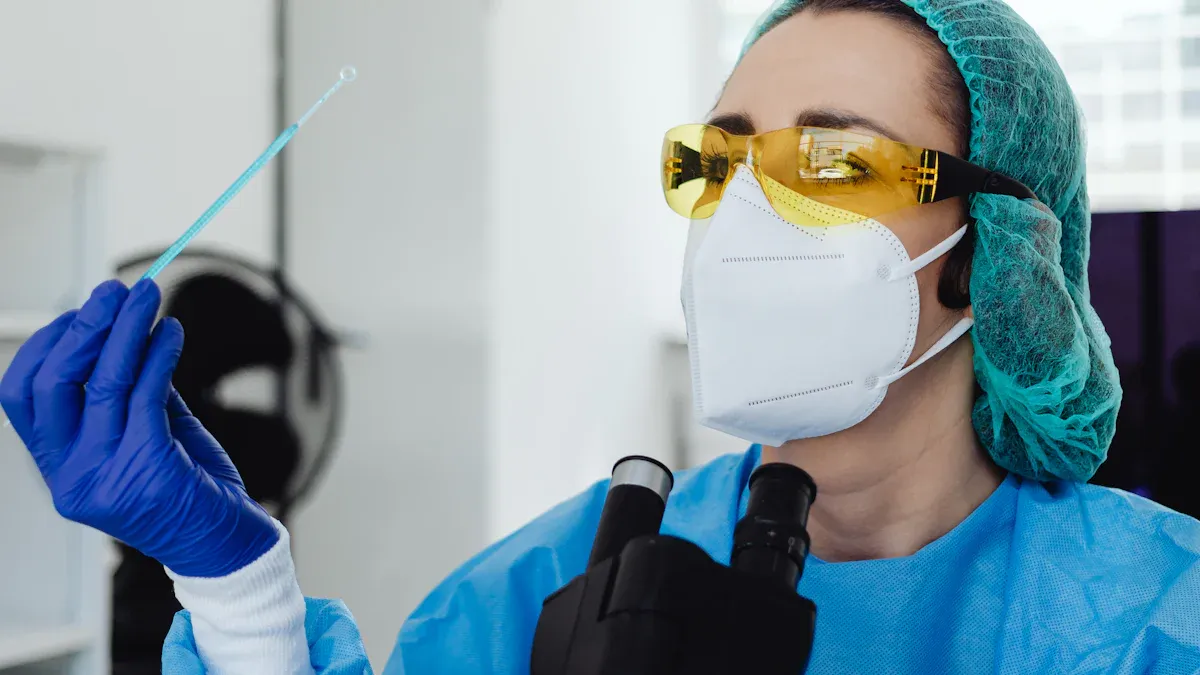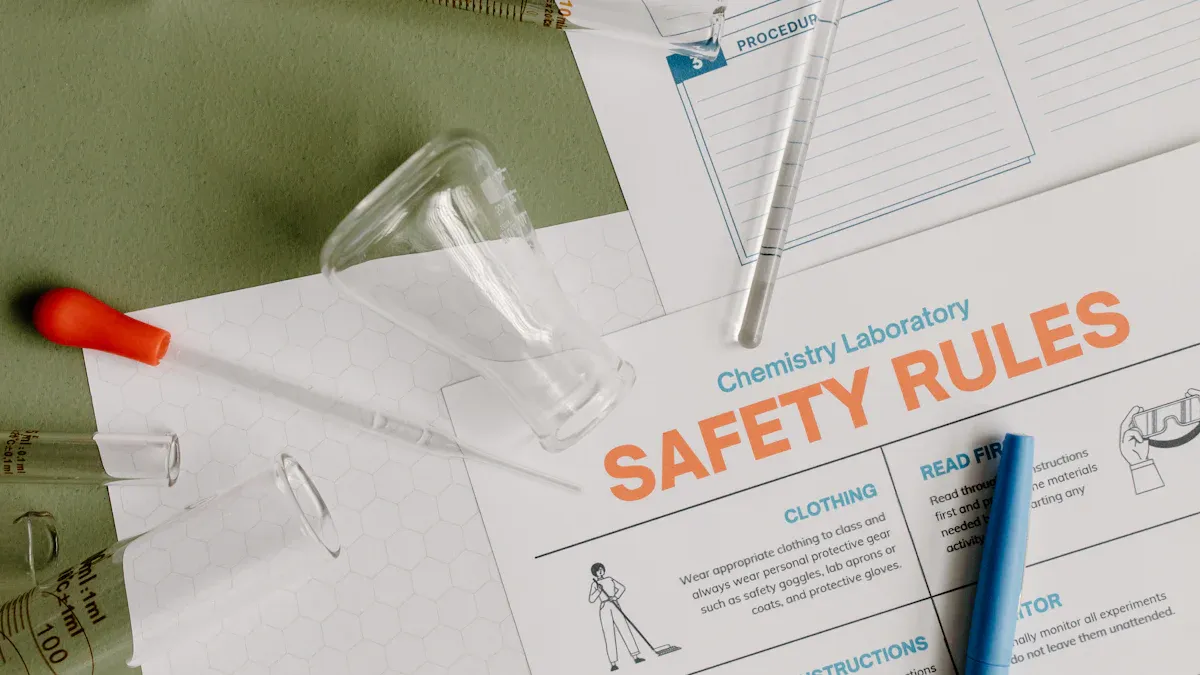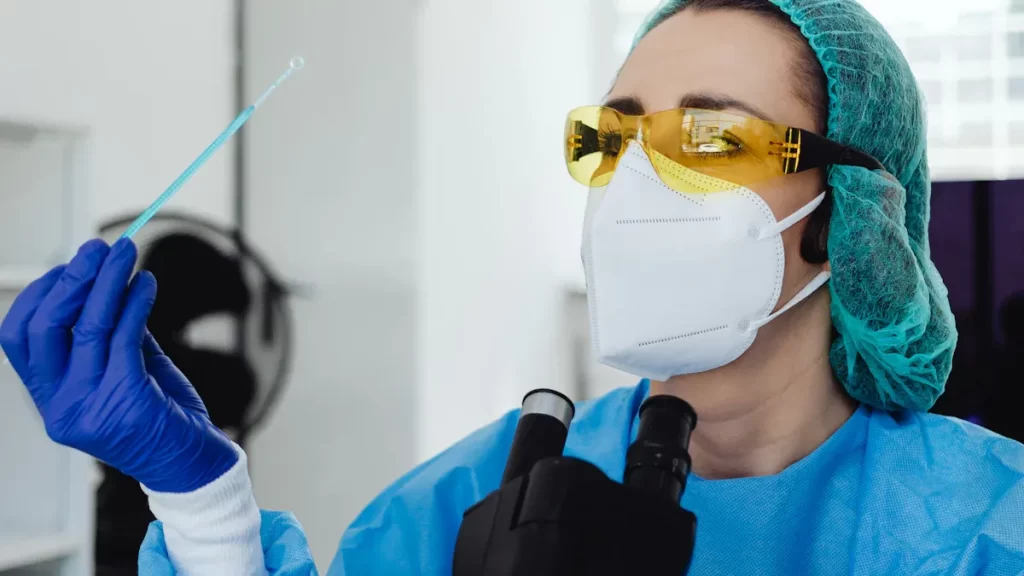News & Events
Protecting Researchers with SDS for Hydrochloric Acid in Western Blot Applications

Imagine you work with hydrochloric acid during a Western Blot experiment. You reach for a bottle without checking the sds for hydrochloric acid. Suddenly, fumes irritate your nose and throat. Your skin turns red and burns where the liquid splashed. These risks show why laboratory safety matters. Common injuries include:
- Breathing problems like coughing or chest tightness
- Pain or burns if acid touches your skin or eyes
- Stomach pain and vomiting if swallowed
Strict safety steps protect you and your team.
Key Takeaways
- Always read the Safety Data Sheet (SDS) for hydrochloric acid before starting any experiment. This document provides crucial information about hazards and safe handling.
- Wear appropriate personal protective equipment (PPE) such as safety goggles, lab coats, and acid-resistant gloves to protect yourself from potential injuries.
- Store hydrochloric acid properly in a corrosive storage cabinet, clearly labeled with hazard warnings. This practice prevents dangerous reactions and keeps the lab safe.
- Follow emergency response steps immediately if a spill occurs. Quick action can prevent serious harm and ensure safety for everyone in the lab.
- Make safety training a regular part of your lab routine. Discussing past accidents helps everyone learn and promotes a culture of safety.
SDS for Hydrochloric Acid

Key Safety Information
You need to understand the most important parts of the sds for hydrochloric acid before you start any experiment. The SDS gives you facts about hazards, safe handling, and emergency actions. You can find this document in your lab or online. Always read it before you use hydrochloric acid.
Tip: The SDS for hydrochloric acid lists the dangers. Hydrochloric acid can burn your skin and eyes. Breathing the fumes can hurt your lungs. Swallowing it can damage your stomach.
Here are the main sections you should check:
| SDS Section | What You Learn |
|---|---|
| Hazard Identification | Tells you about health risks and warnings |
| First Aid Measures | Shows you what to do if exposed |
| Fire Fighting | Explains how to handle fires |
| Accidental Release | Guides you on cleaning up spills |
| Handling & Storage | Tells you how to store and use safely |
You must review the sds for hydrochloric acid every time you work with this chemical. This habit helps you remember the risks and the steps to stay safe.
PPE and Handling
You protect yourself by wearing the right gear and following safe steps. The sds for hydrochloric acid tells you what personal protective equipment (PPE) you need. You should always wear:
- Safety goggles to shield your eyes
- Lab coat to cover your skin
- Acid-resistant gloves to protect your hands
- Closed-toe shoes for your feet
When you handle hydrochloric acid, pour slowly and keep the bottle away from your face. Never mix it with other chemicals unless you know it is safe. If you use sodium dodecyl sulfate in your Western Blot, keep it separate from acids to avoid unwanted reactions.
Alert: If you spill hydrochloric acid, follow the emergency steps in the sds for hydrochloric acid. Wash the area with lots of water. Tell your supervisor right away.
You make your lab safer when you use the sds for hydrochloric acid as your guide. You lower the risk of injury and keep your experiments on track.
High-Sensitivity Western Blot Applications
Where Hydrochloric Acid Is Used
You often use hydrochloric acid during the high-sensitivity western blot procedure. This acid helps you adjust the pH of buffers, which is important for the sensitivity of western blotting. Buffers keep proteins stable and help them move correctly during the western blot. If you do not set the right pH, your results may not be clear or accurate.
In high-sensitivity western blot experiments, you need to prepare solutions with great care. Even a small mistake in the amount of hydrochloric acid can change the outcome. You might use hydrochloric acid to make transfer buffers or to clean glassware before starting the western blot procedure. Each step requires you to measure and handle the acid with precision.
Tip: Always double-check your calculations and measurements when working with hydrochloric acid in high-sensitivity western blot protocols.
Associated Hazards
Hydrochloric acid brings extra risks to high-sensitivity western blot work. You must stay alert because this acid is very corrosive. It can harm your samples, your equipment, and your health.
- Hydrochloric acid can damage biological samples during assays. This can lower the sensitivity of western blotting and ruin your results.
- The acid can corrode metal parts and other lab equipment. Damaged tools may give you false readings or stop working.
- Hydrochloric acid is harmful to your eyes, skin, and mucus membranes. Even a small splash can cause pain or injury.
You protect yourself and your experiment by following safety steps every time. Wear your PPE, work in a well-ventilated area, and never rush when handling acids. If you spill hydrochloric acid, clean it up right away using the steps in your safety data sheet.
Note: The risks increase in high-sensitivity western blot applications because even tiny amounts of acid can affect your samples or your health.
Critical Safety Protocols

Storage and Labeling
You must store hydrochloric acid with care to keep your lab safe. Always follow the correct protocol for storage. Place hydrochloric acid in its original container. Never use a food or drink container. Keep the container tightly closed when not in use.
Store hydrochloric acid in a corrosive storage cabinet. You should separate it from other chemicals to prevent dangerous reactions. Follow these best practices:
- Keep oxidizing acids away from organic acids, flammable, and combustible materials.
- Store acids away from bases.
- Place acids far from reactive metals like sodium, potassium, and magnesium.
- You can store nitric acid and hydrochloric acid in the same cabinet, but use separate drip trays to stop toxic gas from forming.
- Keep acids away from chemicals that could make toxic or flammable gases if mixed.
Labeling is just as important as storage. Every container must have a clear label. Use the full name of the chemical, not an abbreviation. Add hazard warnings, such as “corrosive.” Write the date you transferred or prepared the solution. Include your name if you prepared it. If you have a mixture, write the concentration and the solvent, for example, “1M hydrochloric acid.” Make sure the label stays readable. Use a permanent marker or a strong adhesive label.
Tip: A clear label helps everyone in the lab follow the right protocol and avoid mistakes.
Emergency Response
Accidents can happen even when you follow every protocol. You need to know what to do if hydrochloric acid spills or if someone gets exposed. Quick action can prevent serious harm.
Follow these steps if you have a spill:
- Use absorbent material to make a small dike around the spill if it is safe.
- Isolate the area and evacuate people nearby.
- Watch for vapors. Hydrochloric acid gives off fumes that can hurt your lungs.
- Check the safety data sheet for more steps and warnings.
- Put on the right protective gear: gloves, goggles or a face shield, boot covers, and a lab coat.
- Test the pH of the spill. If it is below 6, use an acid neutralizer or a dilute solution of 5% sodium bicarbonate.
- Use absorbent to pick up the liquid. Place it in a spill bag for hazardous waste. Clean the area with soap and water.
- Contact Environmental Health and Safety (EHS) and Public Safety. Fill out an incident report.
Alert: Never try to clean a large spill by yourself. Get help from trained staff.
Hydrochloric acid vapors can be very dangerous. Even a small amount can cause burning in your nose and throat, coughing, sneezing, and a runny nose. Higher levels can make it hard to breathe, cause chest pain, or even lead to unconsciousness and death if you breathe the vapors for too long.
| Severity | Symptom | Concentration Level (ppm) |
|---|---|---|
| Allowable Concentrations | Long-term Sustainable Limit | 5 |
| Mild Symptoms | Tears, coughing, sneezing, runny nose | 10 – 50 |
| Moderate Symptoms | Trouble breathing, chest pain, life-threatening in 30–60 min | 50 – 100 |
| Serious Symptoms | Impossible to breathe, unconsciousness, death in 30–60 min | 1,000 – 1,300 |
| Lethal Dose | Death | 1,300 – 2,000 |
If you breathe in hydrochloric acid vapors, you may feel burning in your nose, throat, and lungs. You might cough or have trouble breathing. In severe cases, you could lose consciousness or even die. Always work in a well-ventilated area and avoid breathing in vapors. If you get hydrochloric acid on your skin or in your eyes, wash the area right away with lots of water. Remove any contaminated clothing. Go to a doctor if you feel pain or if the irritation does not stop.
Note: Following the right protocol for storage, labeling, and emergency response keeps you and your team safe. Always review the safety data sheet before you start your work.
Integrating Protocols into Lab Routines
Training and Communication
You build a safe lab by making safety training a regular part of your routine. Every researcher should know how to handle hydrochloric acid, especially when working with murine hematopoietic stem cells or during bacterial extraction. You learn best when you see real examples. Accidents and near-misses in labs can teach you important lessons. When you talk about these events, you help everyone understand what went wrong and how to prevent it next time.
You need clear communication in your lab. Leaders must follow safety rules and set a good example. Supervisors should never ignore unsafe practices. If you see something risky, you should feel safe to report it. Your institution should give you a way to share safety concerns without fear. Regular reports about safety issues help everyone stay alert. Leaders must take responsibility for safety in your institution.
Tip: Use case studies from organizations like OSHA to discuss safety in your lab meetings. These stories make safety real and help you remember the right steps.
Routine Safety Checks
You keep your lab safe by checking your safety routines often. Regular safety reviews help you find risks before they cause harm. When you work with hydrochloric acid in protein analysis or phos-tag sds-page, you need to follow the guidelines for safe handling. Safety reviews also help you learn new ways to protect yourself and your team.
Training programs that come from safety reviews make sure you know the latest safety steps. You should review the SDS for hydrochloric acid and your institutional guidelines before each experiment. This habit lowers the chance of accidents and keeps your work with proteins and extraction safe.
- Check labels and storage areas every week.
- Test safety equipment like eyewash stations and showers.
- Review the SDS for hydrochloric acid before using it in phos-tag sds-page or murine hematopoietic stem cells research.
🛡️ Safety grows stronger when you make it part of your daily routine.
You protect yourself and your team when you follow the SDS for hydrochloric acid and use safe lab practices. Regular training, proper PPE, and emergency plans keep your lab safe.
- Following safety protocols lowers accidents and injuries.
- Training covers chemical safety, emergency steps, and PPE.
- Strong safety culture helps everyone feel included and respected.
- Review safety rules often, with formal checks at least every three to six months.
Stay alert, talk openly about safety, and review your protocols often. Your actions help create a safer lab for everyone.
FAQ
What is the main reason to use hydrochloric acid in western blot experiments?
You use hydrochloric acid to adjust the pH of buffers during western blot. This step helps proteins move correctly and keeps them stable. Proper pH is important for accurate protein detection and antibody staining in your analysis.
How do you protect yourself from hydrochloric acid exposure during cell isolation?
You wear safety goggles, a lab coat, and acid-resistant gloves. You keep hydrochloric acid away from your face and work in a ventilated area. You follow the safety and ethics guidelines for handling chemicals during cell isolation and protein analysis.
Can hydrochloric acid affect antibody staining or detection in western blot?
Yes. If you use too much hydrochloric acid, you can damage proteins or cells. This mistake can lower the quality of antibody staining and detection. You always measure carefully and check your buffers before starting the western blot.
What should you do if hydrochloric acid spills during protein isolation?
You alert your supervisor and follow the emergency steps in the safety data sheet. You use absorbent material and neutralizer for small spills. You wear PPE and avoid breathing vapors. You protect your cells, proteins, and antibodies from contamination during isolation.
Why is labeling important when storing hydrochloric acid for western blot and cell work?
You label every container with the chemical name, concentration, and date. Clear labels help you avoid mistakes during protein isolation, antibody staining, and cell detection. Proper labeling keeps your western blot experiments safe and organized.

